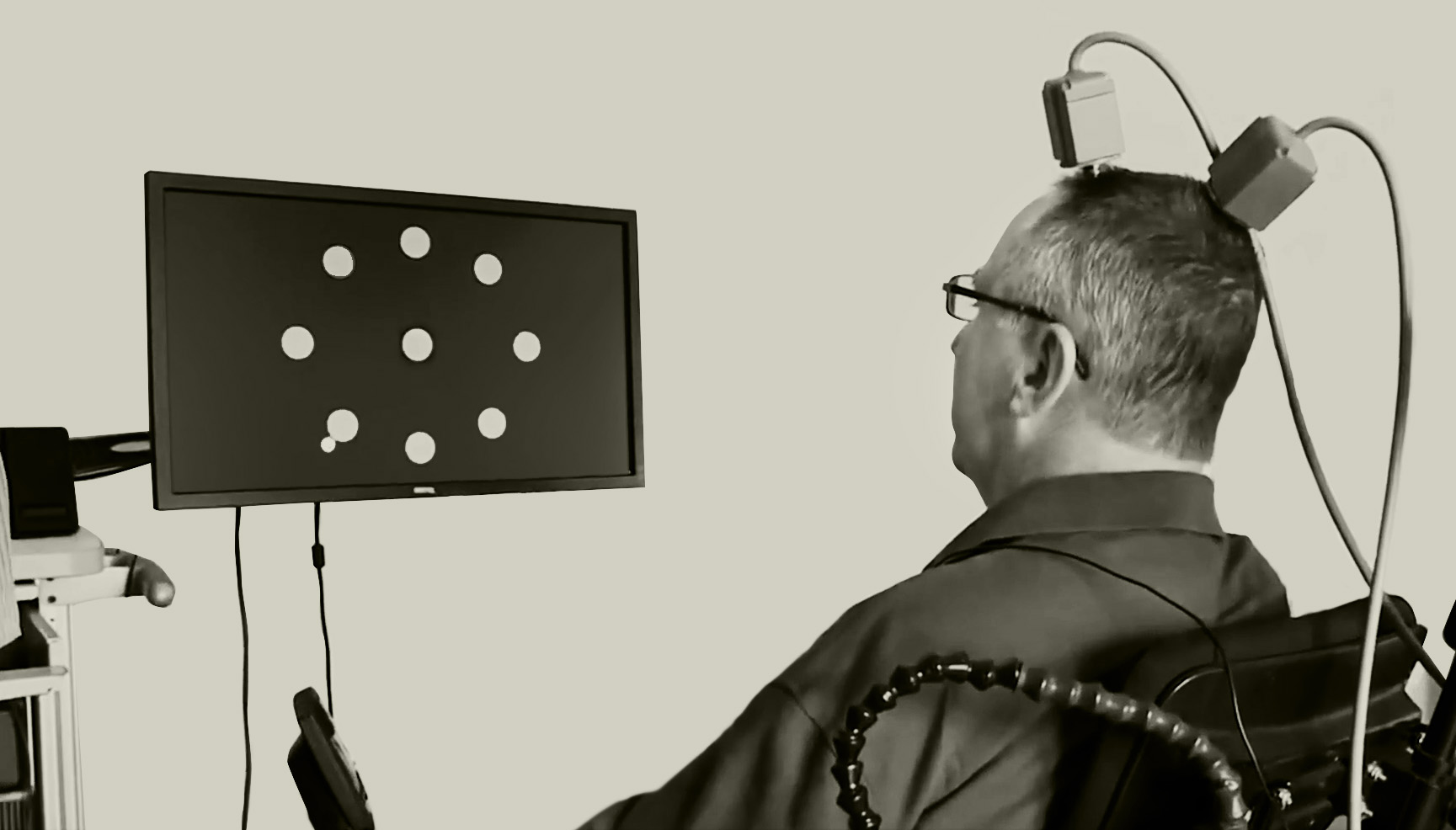technologyreview | In a 12-by-20-foot room at a skilled-nursing facility in Menlo Park, California, researchers are testing the next evolution of the computer interface inside the soft matter of Dennis DeGray’s motor cortex. DeGray is paralyzed from the neck down. He was hurt in a freak fall in his yard while taking out the trash and is, he says, “as laid up as a person can be.” He steers his wheelchair by puffing into a tube.
But DeGray is a virtuoso at using his brain to control a computer mouse. For the last five years, he has been a participant in BrainGate, a series of clinical trials in which surgeons have inserted silicon probes the size of a baby aspirin into the brains of more than 20 paralyzed people. Using these brain-computer interfaces, researchers can measure the firing of dozens of neurons as people think of moving their arms and hands. And by sending these signals to a computer, the scientists have enabled those with the implants to grasp objects with robot arms and steer planes around in flight simulators.
DeGray is the world’s fastest brain typist. He first established the mark four years ago, using his brain signals to roam over a virtual keyboard with a point-and-click cursor. Selecting letters on a screen, he reached a rate of eight correct words in a minute. Then, right before the covid-19 pandemic began, he demolished his own record, using a new technique where he imagined he was hand-writing letters on lined paper. With that approach, he managed 18 words per minute.
One of the people responsible for the studies with DeGray is Krishna Shenoy, a Stanford University neuroscientist and electrical engineer who is among the leaders of the BrainGate project. While other brain-interface researchers grabbed the limelight with more spectacular demonstrations, Shenoy’s group has stayed focused on creating a practical interface that paralyzed patients can use for everyday computer interactions. “We had to persevere in the early days, when people said Ah, it’s cooler to do a robotic arm—it makes a better movie,” says Shenoy. But “if you can click, then you can use Gmail, surf the Web, and play music.”
Shenoy says he is developing the technology for people with “the worst afflictions and the most need.” Those include patients who are utterly locked in and unable to speak, like those in the end stage of ALS.
But if the technology allows people like DeGray to link their brain directly to a computer, why not extend it to others? In 2016, Elon Musk started a company called Neuralink that began developing a neural “sewing machine” to implant a new type of threaded electrode. Musk said his goal was to establish a high-throughput connection to human brains so that society could keep pace with artificial intelligence.



0 comments:
Post a Comment